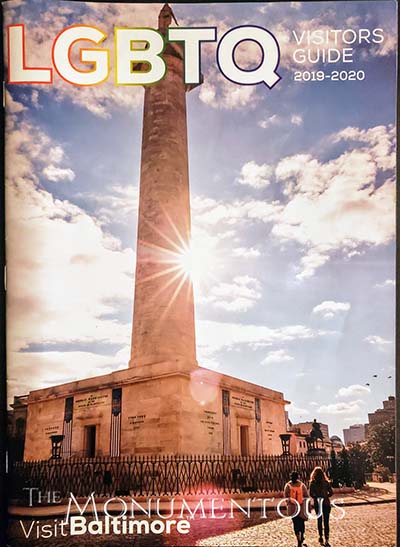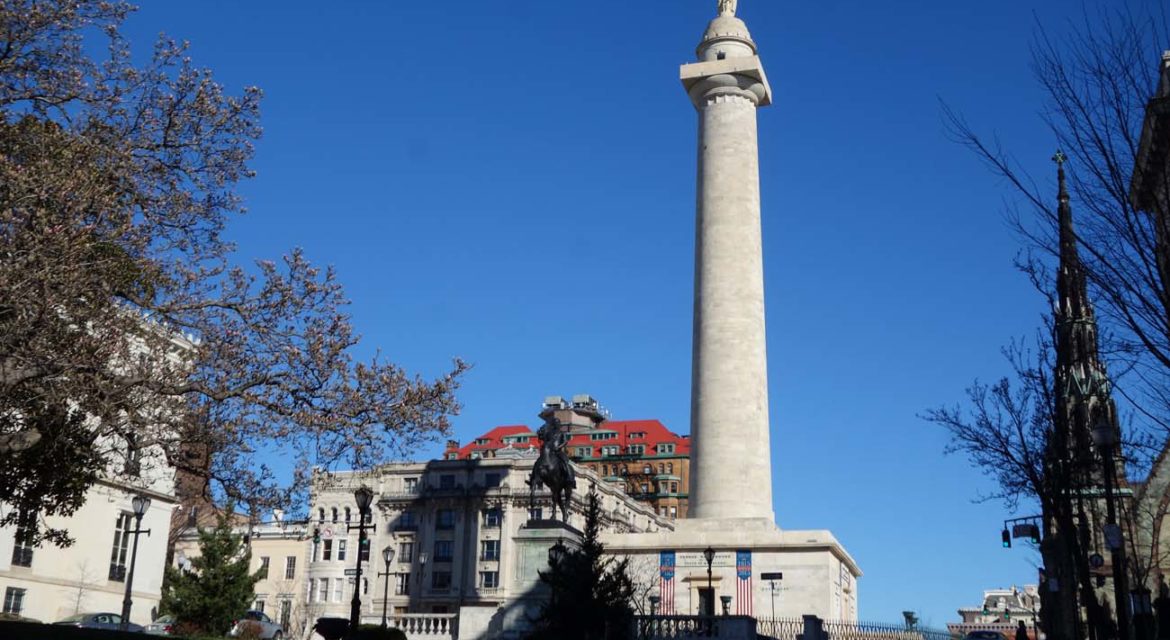
Monuments that are dedicated to concepts like victory or the history of an area often symbolize something far more ambiguous than ones dedicated to a specific person. However, landmarks that have been erected to honor a single individual frequently come to represent something much deeper. That’s certainly what happened for the Washington Monument in Baltimore.
The first major monument to honor George Washington rises over 175 steps with a statue of Washington himself towering over the city. Constructed of marble and completed in 1829 when the statue was raised to the top, the Monument has been a fixture of Baltimore even as the city has changed and developed around it. This consistency has ensured that the Monument has and will continue to enable powerful social and economic impacts across the city.

A Symbol of Prestige and Benefaction
A monument to honor George Washington was first proposed in Baltimore as early as 1807, with a competition for the Monument’s design being held in 1814 and won with an elaborate initial concept. The cornerstone of the Monument was laid in 1815, with the statue of Washington signifying completion once it was raised into position.
Made of marble, the statue depicts Washington resigning his commission as Commander-in-Chief of the Continental Army in 1783 at the Maryland State House in Annapolis. The act was seen as an unprecedented peaceful transfer of power, which the city could embrace as a symbol of prestige and benefaction for the citizens of Baltimore and the country as a whole.

The original square of donated land that the Monument sits on was eventually expanded to include open spaces on the north-south and east-west axes, named respectively “Washington Place” and “Mount Vernon Place.” Over time, “Mount Vernon Place” has come to describe all of the squares surrounding the Monument. The squares have been redesigned and replanted several times over the decades, but they have and continue to serve as a public gathering place to celebrate traditional festivals that attract hundreds of thousands each year.
After almost two centuries of wear and tear, issues like missing mortar and rusted support brackets became a safety concern. This spurred a $5.5 million restoration by the Mount Vernon Place Conservancy, which began in January 2014. The Monument was reopened and rededicated on July 4, 2015, in celebration of the bicentennial of the cornerstone being laid.
The history of the Monument can be seen in several ways at and around the landmark, but the experiences associated with being inside and up top of it are what make it truly unique.

A View of Baltimore from Above
Climbing the 227 steps to the top of the Monument provides a look at every side of Baltimore, which is a view that has changed considerably since the Monument was first erected. Contemporary buildings are in every direction, but the view to the south allows viewers to see all the way down to the Inner Harbor area. Additionally, the history of the city can be seen from this position, with buildings that have been in these spots for decades like the Mount Vernon Place First United Methodist Church as well as the Emmanuel Episcopal Church being easy enough to spot.

The architecture and base room of the Monument are classic in every sense, a style which is highlighted by the bust of Washington that portrays him in Roman dress and greets visitors as soon as they step into the Monument. The Monument’s architect envisioned this base room as a portrait gallery for the nation’s founders, although Washington’s is the only one that was ever installed. Empty placements for those statues are all around the room, along with a plaque dedicated to the centennial anniversary of the Monument.
The 2015 renovation saw the installation of numerous interactive screens that allow visitors to get a better sense of the history of the Monument, as well as other milestones for the city. Visitors are able to see and experience this base room along with these interactive materials free of charge.
The base of the Monument is only open on select days and at certain times, but visitors are able to experience the monument from the outside in a totally different way during the day and at night. At night, long after access to the interior has been closed, the monument is lit up to provide viewers with totally unique experiences during the day and at night. While the activities around the Monument at night are limited, the way in which it can be seen across the city and up close are as unique as they are memorable.
The fact that the Monument is such a prominent fixture in the skyline of the city during the day and at night has undoubtedly impacted the social influence it has enabled, and that influence is something that has been and continues to be realized in numerous ways.

Influencing the Identity of Baltimore
 The Mount Vernon Historic District is one of the city’s oldest neighborhoods, which features mansion houses, townhouses, early luxury apartments, commercial buildings, institutional and civic buildings. The Mount Vernon Cultural Walk contains 24 historic sites and museums, with the Washington Monument being just one of those points of interest. This history is one that residents and tourists have come to embrace in different ways.
The Mount Vernon Historic District is one of the city’s oldest neighborhoods, which features mansion houses, townhouses, early luxury apartments, commercial buildings, institutional and civic buildings. The Mount Vernon Cultural Walk contains 24 historic sites and museums, with the Washington Monument being just one of those points of interest. This history is one that residents and tourists have come to embrace in different ways.
Since 1971, the city has held the annual “Lighting of the Washington Monument” during the first Thursday in December. A holiday village is held prior to the lighting ceremony in the West Square of Mount Vernon Place. Events like this are held amongst the squares that surround the Monument, which combine history and contemporary developments that continue to reinvigorate the area.
Those developments have changed the appearance of the neighborhood, and it’s an evolution that stakeholders want to take to another level with the Design Guidelines for New Construction. These Guidelines explore what it would mean to see the area revitalized while also enhancing the existing environment. It’s an endeavor that showcases how the Monument has become such an important symbol for the city. This can be seen in small and big ways, as a variety of symbols and signs throughout the city directly reference the Monument. It’s proof of how the Monument has been incorporated into the very identity of Baltimore.
Being able to be incorporated into the very identify of a city proves what kind of a monumentous impact projects of this type can mean for an entire area. In literal and figurative ways, all roads in Baltimore lead to the Monument, and that fact has ensured the legacy of the Monument is about something much more than the structure or even Washington himself.

A Legacy That Will Help Move the City Forward
 The evolution the Monument has enabled and been part of for Baltimore is something that’s been going on for a long while. As a couple examples of this evolution, in 1924 the equestrian statue of Lafayette was installed, and the squares that surround the Monument continue to be revamped and refined. It’s an evolution that the city of Baltimore has embraced to help move forward with a variety of urban renewal projects.
The evolution the Monument has enabled and been part of for Baltimore is something that’s been going on for a long while. As a couple examples of this evolution, in 1924 the equestrian statue of Lafayette was installed, and the squares that surround the Monument continue to be revamped and refined. It’s an evolution that the city of Baltimore has embraced to help move forward with a variety of urban renewal projects.
Guidelines for new construction and the vision for the future of the Monument proves that as much of an impact as the Monument has had in the past, the influence of the Monument will become even greater in the future, all of which will benefit Baltimore in powerful ways.
